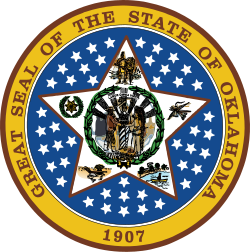This article needs additional citations for verification .(August 2018) |
| President pro tempore of the Oklahoma Senate | |
|---|---|
| Appointer | Elected by the Oklahoma Senate |
| Inaugural holder | Henry S. Johnston |
| Formation | Oklahoma Constitution 1907 |
| Succession | Second |
 |
|---|
The president pro tempore of the Oklahoma Senate is the second-highest-ranking official of the Oklahoma Senate and the highest-ranking state senator. The Oklahoma Constitution designates the Lieutenant Governor of Oklahoma as the highest-ranking official, serving ex officio as President of the Senate, even though the lieutenant governor only votes in the case of a tie. During the lieutenant governor's absence, the president pro tempore presides over sessions. By longstanding custom, the lieutenant governor presides over sessions devoted to ceremonial purposes, while the bulk of the legislative management and political power is reserved for the president pro tempore, who is elected directly by the Oklahoma Senate.
Contents
- Powers and duties
- History
- Democratic control (1907-2007)
- Evenly divided (2007-2009)
- Republican control (2009-present)
- List of presidents pro tempore
- See also
- References
- External links
The office of president pro tempore was created upon the ratification of the state constitution in 1907. The president pro tempore is popularly elected by the state senators, unlike the custom of the United States Senate where the most senior senator in the majority party serves as president pro tempore. As of 2013, every Oklahoma president pro tempore has been a member of the majority party, though it is not a constitutional requirement.
The president pro tempore is second in gubernatorial line of succession in Oklahoma, behind the lieutenant governor. The president pro tempore’s counterpart in the lower house of the Oklahoma Legislature is the Speaker of the Oklahoma House of Representatives.


